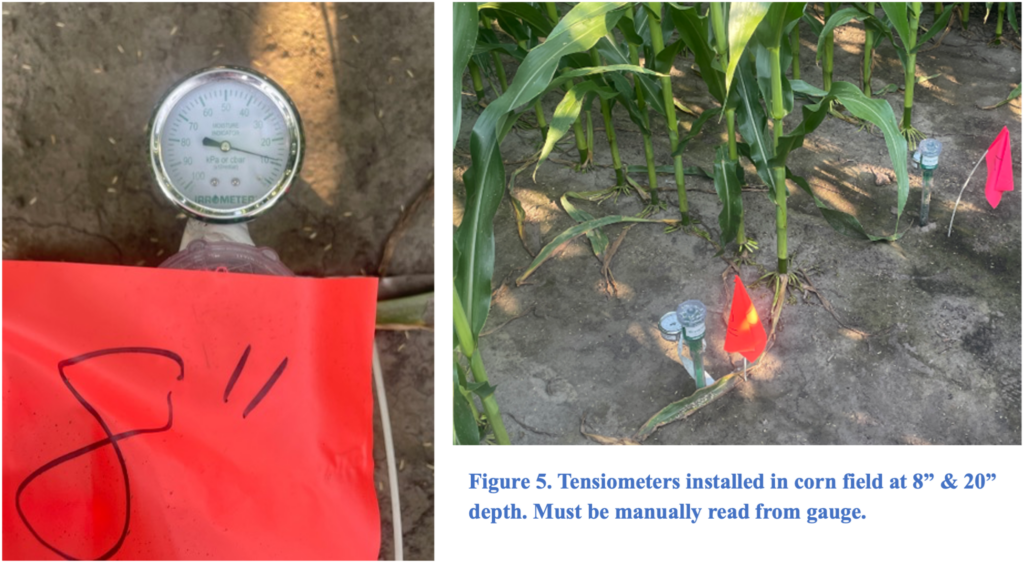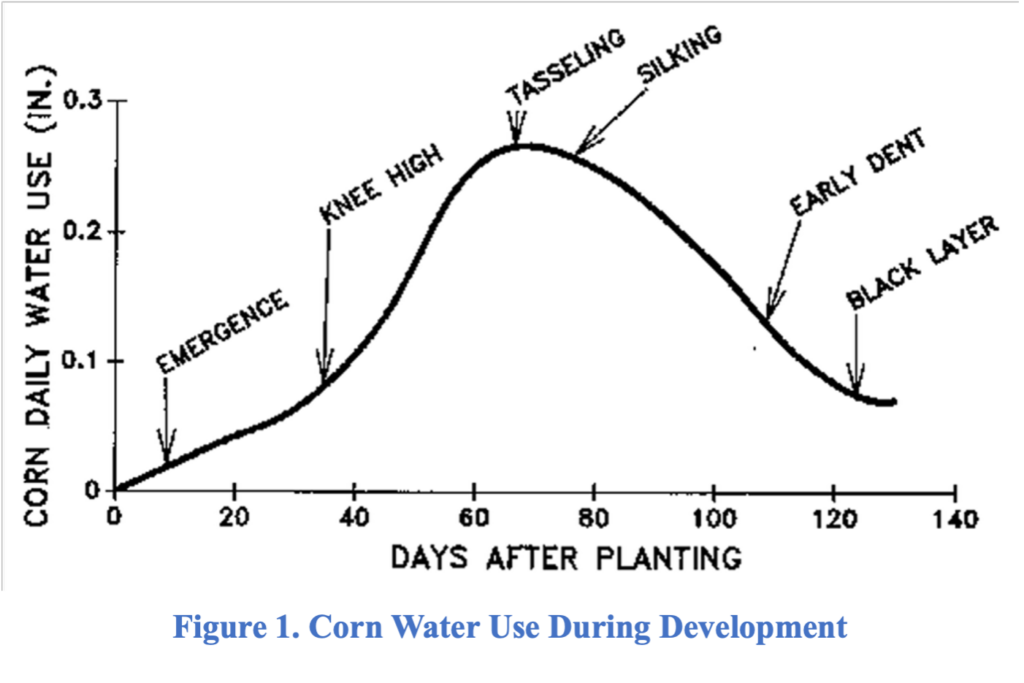Soil Moisture and Crops Needs
go.ncsu.edu/readext?1080062
en Español / em Português
El inglés es el idioma de control de esta página. En la medida en que haya algún conflicto entre la traducción al inglés y la traducción, el inglés prevalece.
Al hacer clic en el enlace de traducción se activa un servicio de traducción gratuito para convertir la página al español. Al igual que con cualquier traducción por Internet, la conversión no es sensible al contexto y puede que no traduzca el texto en su significado original. NC State Extension no garantiza la exactitud del texto traducido. Por favor, tenga en cuenta que algunas aplicaciones y/o servicios pueden no funcionar como se espera cuando se traducen.
Português
Inglês é o idioma de controle desta página. Na medida que haja algum conflito entre o texto original em Inglês e a tradução, o Inglês prevalece.
Ao clicar no link de tradução, um serviço gratuito de tradução será ativado para converter a página para o Português. Como em qualquer tradução pela internet, a conversão não é sensivel ao contexto e pode não ocorrer a tradução para o significado orginal. O serviço de Extensão da Carolina do Norte (NC State Extension) não garante a exatidão do texto traduzido. Por favor, observe que algumas funções ou serviços podem não funcionar como esperado após a tradução.
English
English is the controlling language of this page. To the extent there is any conflict between the English text and the translation, English controls.
Clicking on the translation link activates a free translation service to convert the page to Spanish. As with any Internet translation, the conversion is not context-sensitive and may not translate the text to its original meaning. NC State Extension does not guarantee the accuracy of the translated text. Please note that some applications and/or services may not function as expected when translated.
Collapse ▲Rising temperatures this week have increased crop demand for water, especially with corn in various reproductive stages and some soybeans just beginning to flower. Luckily, the past couple of weeks have seen consistent rains, which has increased soil moisture reserves across Pamlico County (some areas experienced excessive moisture).
Key point to remember is that soil moisture and water depth in Pamlico County plays a large role in crop yield and growth. Saturated soils and high-water tables following nitrogen applications can increase leaching and denitrification, and moisture stress (drought or excess) at reproductive stages can significantly affect grain and pod fill.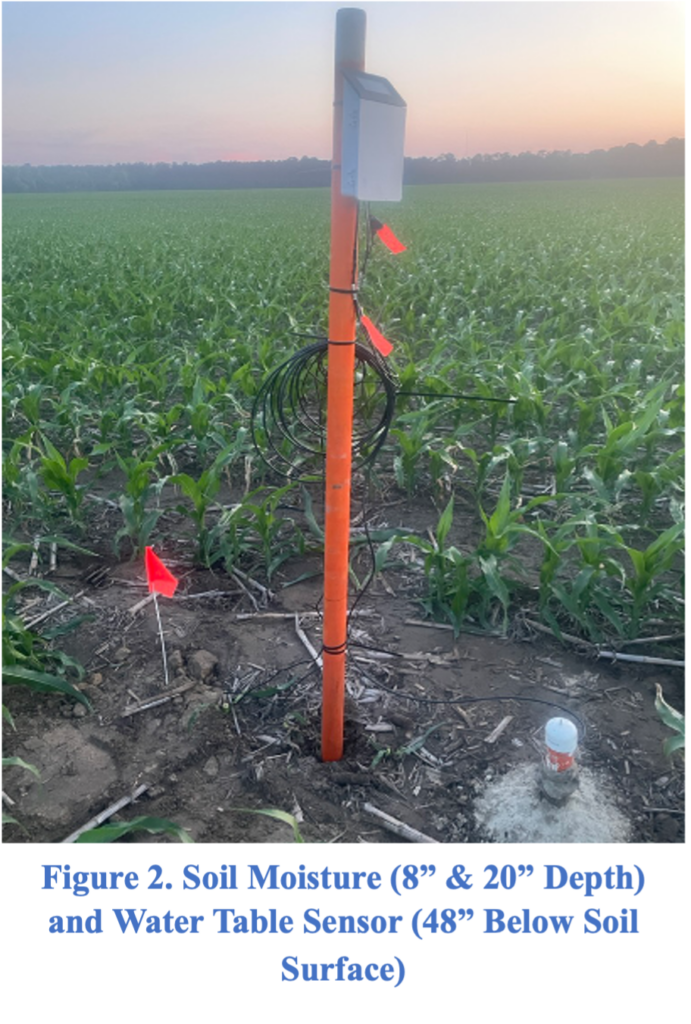
To help monitor this need, Pamlico County Center installed a set of soil moisture and water table sensors within an irrigated corn field in Pamlico County. (See Figure 2.)
- Install Date: 5/8/25
- Corn Growth Stage at Install: V-7
- Soil Type: Yo – Yonges Loamy fine sand
Since installation, this field has received only one irrigation event and several rain events, but has never reached significant water depletion levels. In fact, soil moisture levels have been closer to saturation since installation. The corn in this field was planted in late March, reached VT-R1 around June 3, 2025, and is currently at R3-R4 as of June 24, 2025.
Some limited areas across this sight have exhibited signs of nitrogen and potassium deficiencies, and are most likely due to saturated soil conditions following sidedress at V-7 (5/8). (See Figure 3 for Examples of nutrient deficiencies) In Pamlico County, the water table can quickly reach the top 12 inches of the soil profile following a heavy rain event, eliminating oxygen from soil and decreasing root mass. This saturated soil condition also increases denitrification, the process by which soil microbes in search of oxygen utilize the oxygen portion of Nitrite NO2- and Nitrate NO3- resulting in gaseous forms of nitrogen being lost to the atmosphere.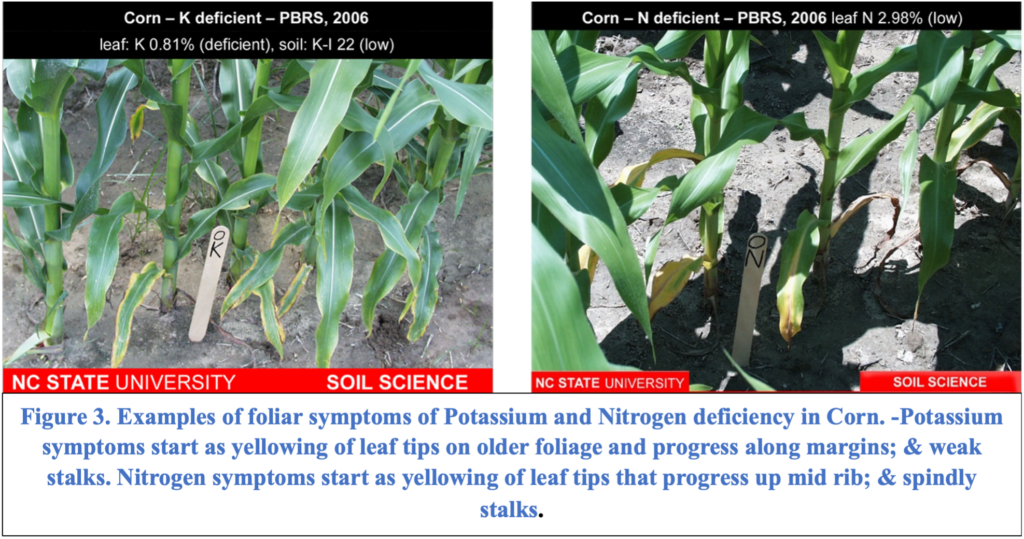
While excessive soil moisture can have significant impacts, greater soil moisture and precipitation during reproduction has generally resulted in improve yields (Austin et al., 2019, access at Optimum Nitrogen Rates for Maize and Wheat in North Carolina). It is important to remember that water demand by crops increases ahead of reproduction and continues through grain fill (See Figure 1.). Water management at this stage is critical to higher yields.
With crop water demand now at its peak in Pamlico County, continued showers will be important over the next few weeks. However, you may notice during these hot days (>95°F) that corn and soybeans will begin to show signs of wilting or water stress. Current soil moisture levels are still relatively high, so leaf roll is most likely due to transpiration rates exceeding the roots’ ability to draw moisture from the soil. You will notice overnight that plants recover and look normal in the morning. While a few days of this wilting and recovery will have limited effects on yield, continued high temperatures (>80°F especially at night) will increase respiration rates and result in a shorter grain fill period.
For those who have irrigation or means of managing soil moisture, monitoring soil moisture through black layer can greatly improve yield. Without a means of measuring soil moisture growers are left with feeling the soil and taking their best guess. While this is convenient, it is also difficult to quantify and rarely accounts for the moisture reserves within the effective rooting depth of crops.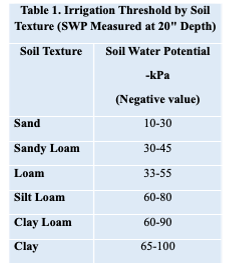
Soil moisture sensors can provide a means of measurement, decrease guess work, and provide a means for improvement in the future. Soil tensiometers that measure the soil water potential, provide an approximation of how hard roots must work to extract water from the soil. With this knowledge, we can measure soil moisture across the effective rooting zone and set thresholds for triggering irrigation.
Table 1. Provides a simple set of thresholds for soil water potential (-kPa) in corn, measured at 20” below the surface (the lower limit of effective root depth of corn). These values vary by soil type to account for soil moisture holding capacity. Remember that you cannot treat all soil types the same, as finer texture soils have greater storage capacity and coarser soil have less.
Triggering irrigation at or just before these values can help replenish soil moisture required by crops for the next 3-4 days. By monitoring moisture at this depth, you help ensure roots access most of the available water within the effective rooting zone. This is important because by depleting this moisture, you protect against over saturation and rising water tables that might occur from heavy rains following irrigation. With afternoon storms a constant threat through September, this is a key point to remember in Pamlico County.
For those without irrigation, soil moisture sensors could also help you make decisions about management of water control structures in ditches. Soils within Pamlico County are capable of moving water up through the soil profile, and retention of moisture with surface drainage ditches can be beneficial. However, unless you monitor soil moisture levels it can be difficult to understand this relationship (See Figure 4.).
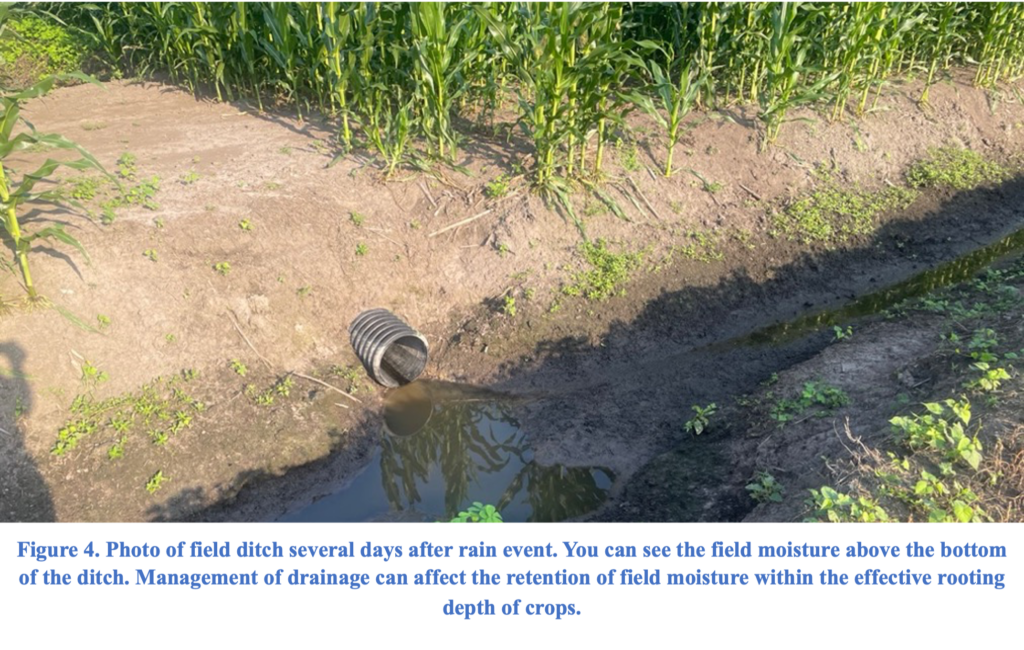
Lastly, every field and soil type across the county is different, so multiple soil moisture sensors can help provide a picture of water needs across your operation. Electronic sensors that record and report findings to cloud based applications provide convenient access from phones and computers. Manual sensors placed at accessible locations can provide the same information at a reduced cost, but are only effective if you take the time to visit the site. (See Figure 5.) Whatever sensor you choose, effective information can be gathered to make informed decisions.
If you want to learn more about monitoring soil moisture, contact Daniel Simpson at 252-745-4121 or Daniel_simpson@ncsu.edu.